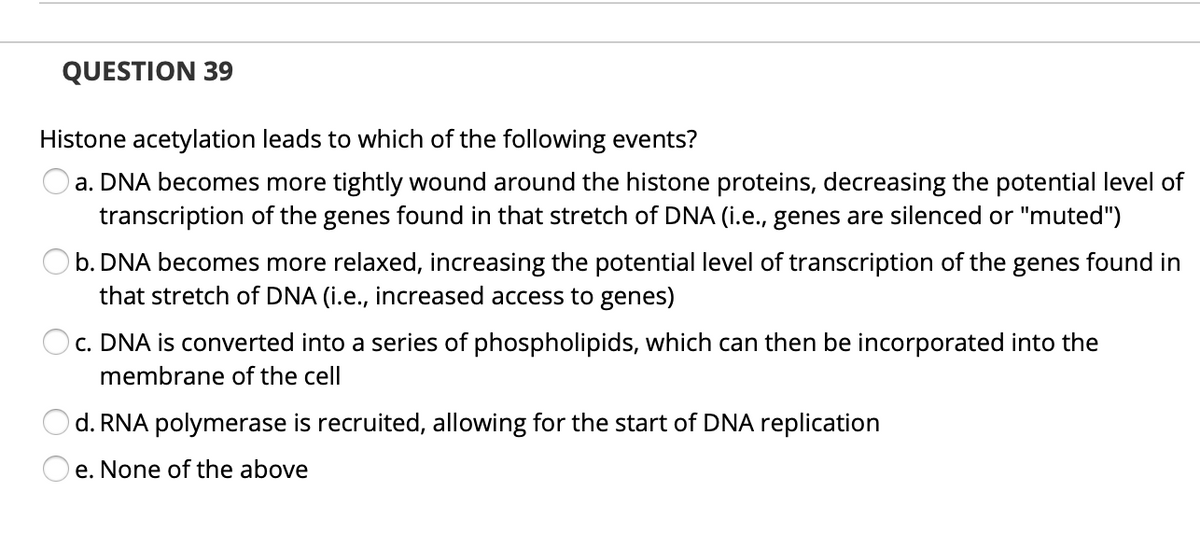QUESTION 39 Histone acetylation leads to which of the following events? Oa. DNA becomes more tightly wound around the histone proteins, decreasing the potential level of transcription of the genes found in that stretch of DNA (i.e., genes are silenced or "muted") b. DNA becomes more relaxed, increasing the potential level of transcription of the genes found in that stretch of DNA (i.e., increased access to genes) Oc. DNA is converted into a series of phospholipids, which can then be incorporated into the membrane of the cell d. RNA polymerase is recruited, allowing for the start of DNA replication e. None of the above
Gene Interactions
When the expression of a single trait is influenced by two or more different non-allelic genes, it is termed as genetic interaction. According to Mendel's law of inheritance, each gene functions in its own way and does not depend on the function of another gene, i.e., a single gene controls each of seven characteristics considered, but the complex contribution of many different genes determine many traits of an organism.
Gene Expression
Gene expression is a process by which the instructions present in deoxyribonucleic acid (DNA) are converted into useful molecules such as proteins, and functional messenger ribonucleic (mRNA) molecules in the case of non-protein-coding genes.

Trending now
This is a popular solution!
Step by step
Solved in 2 steps









